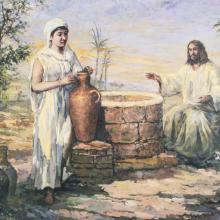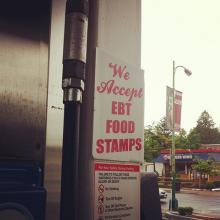Samaritan woman
When we consider the inferior status of women in Palestine in the first century ... Jesus’ attitude toward women is striking. Jesus revealed himself first to women after his resurrection. The disciples ... thought the women were just dreaming. Paul does not include the women in his list of witnesses to the resurrection (1 Corinthians 15:5-7). But the fact still remains: Jesus dared to appear first to women.
The incident of Jesus and the Samaritan woman at the well (John 4:7-30) has radical implications also. Here Jesus blatantly broke three customs: He, a man, talked to a woman in public. He, a Jew, spoke to a Samaritan. Finally, he instructed a woman in religion—a topic reserved only for men. When the disciples saw Jesus talking to this woman they were disturbed, but Jesus ignored them.
Even Paul’s words and actions must have been shocking to his first-century friends. Despite his injunction at one point that women should be silent in the church, he freely recognized women as leaders at other points. In Philippians 4:2 he commended Euodia and Syntyche and called them “fellow workers.” In 1 Corinthians he assumed women were prophesying and participating actively in worship. In Romans 16:7 he saluted Junia, a woman, as an apostle ... In Romans 16:1 he called Phoebe a deacon and, according to the best translation, he said, “she was designated as a ruler over many by me.”

Image via Freedom Studio/Shutterstock.com
I continue to be surprised and disappointed by ubiquitous interpretations of [the Samaritan woman] as a “whore” or “prostitute.” John is using symbolism — the woman represents Samaria, which, according to Jewish reckoning, worshipped the five foreign gods. Samaria was seen as being partially faithful to the covenant (“the one you have now is not your husband”). John depicts Jesus as the bridegroom. When the Samaritan woman joins Jesus, the symbolized, divided but related ethnic groups will stop fighting …”
Fear, anxiety, and secrecy marked the roughly year and a half I received federal food stamps.
Like the New Testament’s famed Samaritan woman who snuck to the well at an odd hour to get water, I tried to retrieve the sustenance my family needed outside the view of my immediate community.
I tried never to let those around me see me using the food stamp card, and certainly wouldn’t have ever told my extended family or friends. I wanted no one to know I was living outside the bounds of “acceptable” life.
I had decided to find out whether I qualified for the Supplemental Nutrition Assistance Program (SNAP) while a full-time seminary student trying to raise three teens — one of them in college. I worked jobs as much as I could around my school schedule, but in the end I never had enough money to pay bills, meet my children’s needs, and buy enough groceries for the month.

